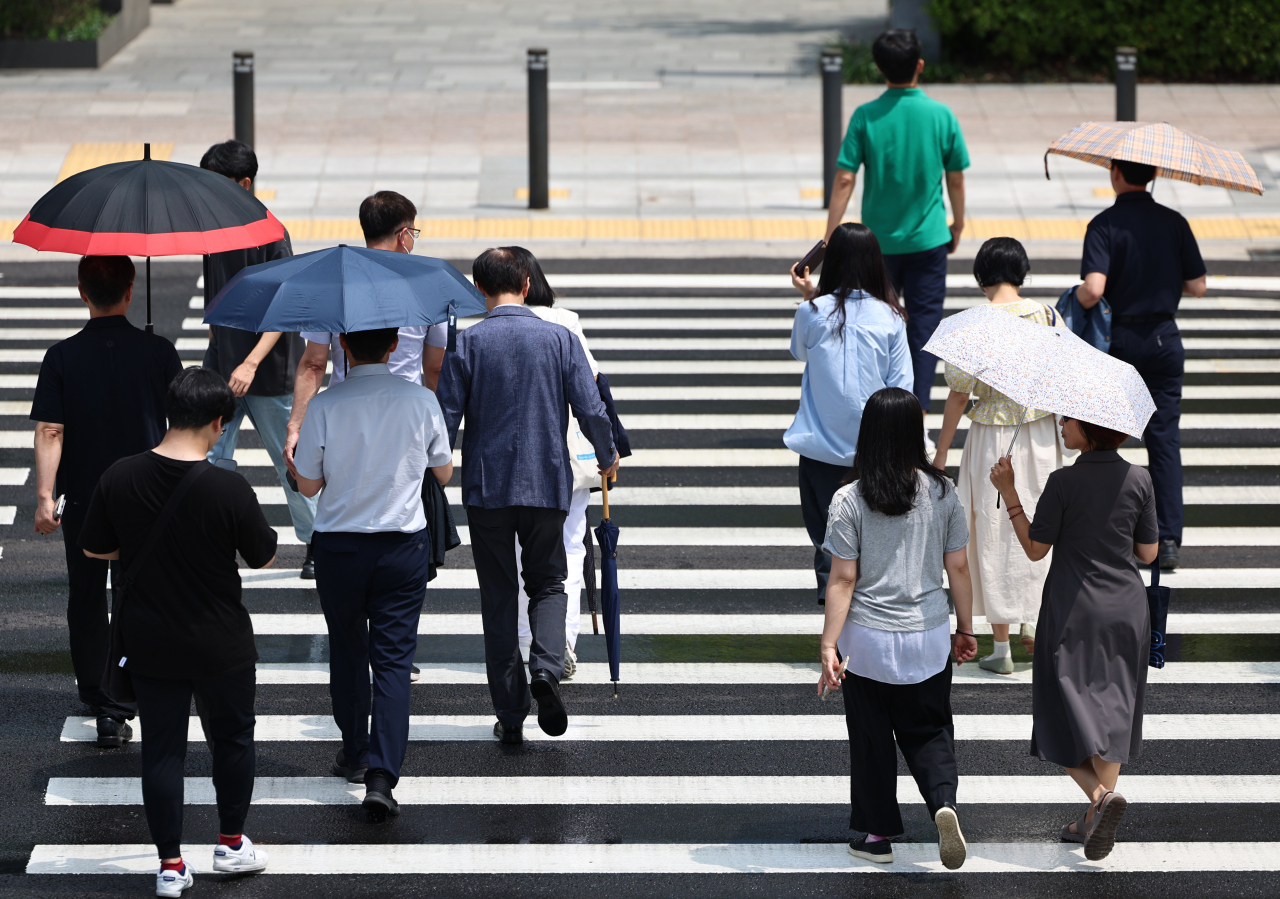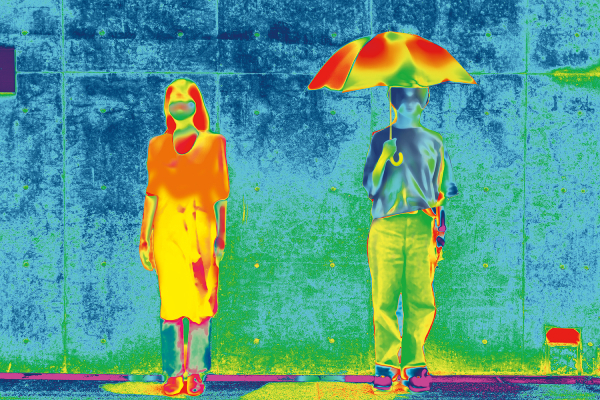 |
People with parasols cross a street in Jung-gu, Seoul, Aug. 7. (Newsis) |
A common sight in South Korea on sunny days used to be of older women holding frilly parasols. But in the past few years, the deadly summers associated with climate change have made parasols no longer the choice of just a single demographic.
In fact, more Koreans of all ages and genders are spotted using regular umbrellas on sunny days this summer, which experts say makes perfect sense, as the current heat wave has already claimed 24 lives here.
Not only do people resort to ordinary umbrellas for temporary outdoor shade, but many also opt for products that serve as both an umbrella and a parasol -- waterproof on the outside for rain protection and UV-coated undersides for sun protection.
Parasols and umbrellas do more than just create shade, they can help lower the risk of heatstroke, the experts say.
New summer essential
Extreme heat has been baking Korea for weeks, with the number of heat wave days -- based on the national average -- reaching 18.9 as of Aug. 17, surpassing last year's total of 12 for the entire season.
The number of people treated for heat-related illnesses so far has risen to 2,814, with 24 recorded deaths as of Monday.
The national weather agency says the unwavering heat wave is to persist through the end of this month, with temperatures ranging from 33 to 36 degrees Celsius nationwide.
Choi Jae-hyun, 31, who works and lives in Seoul, makes sure to carry an umbrella in his bag whenever he steps outside.
“Last month, I used my girlfriend's UV protection umbrella and realized how much cooler it kept me,” he said. He bought one for himself that doesn't look much different from a regular umbrella.
Men specifically using parasols are no longer such a rare sight, he added.
"Not many, but I have seen several male office workers around my workplace using parasols to protect themselves," Choi said.
In 2019, a survey by job search platform Career found that over 46 percent of respondents felt social perceptions were a major factor preventing men from using parasols.
On home decor and lifestyle app Today House, sales of parasols surged by 415 percent in the week ending Aug. 4, compared to the same period last month. This spike in sales coincided with the onset of the heat wave, which began in earnest following the end of the rainy season the last week of July.
The variety of products also doubled during this period, with most designed to provide protection from both rain and sun.
An experiment conducted by local daily Dong-a Ilbo in 2021 revealed a significant temperature drop of nearly 8 degrees on the scalp when carrying a parasol. Without one, scalp temperature reached 45.4 degrees Celsius, but it fell to 37.6 degrees Celsius when using one.
According to Japan's Ministry of the Environment report, parasols can lower temperatures by up to 7 degrees. The ministry also cited research that parasols can decrease heat stress by approximately 20 percent.
While using parasols is primarily associated with cooling down and preventing heat-related illnesses, carrying one as a summer essential also offers additional health benefits, such as protecting one's skin from aging and skin cancer and one's eyes from photokeratitis and cataracts, according to the KDCA and medical studies.
A 2011 study titled “UV Radiation Protection by Handheld Umbrellas,” conducted by researchers at Emory University, found that umbrellas, whether standard or with UV protection, are effective in blocking UV rays to varying degrees.
The study revealed that standard handheld umbrellas block at least 70 percent of UV light, with darker colors offering better protection. Black umbrellas, for example, blocked over 90 percent of UV rays, while white umbrellas provided the least protection. However, umbrellas with a sun protection coating were found to block more than 99 percent of UV rays.
For Park, a Seoul college student in her 20s, parasols provide an additional layer of skin protection alongside sunscreen.
"I try to minimize sun exposure as much as possible since UV rays accelerate skin aging by making wrinkles and freckle-like spots,” she said, adding that carrying a parasol is practical and convenient.
 |
This image shows how a parasol reduces temperatures compared to standing without one in direct sunlight. (World Party Co., Ltd.) |







